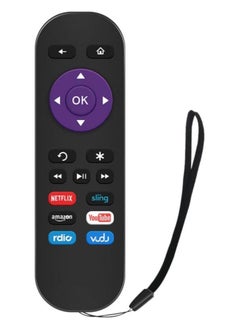Highlights- Versatility and Device Compatibility: Remote controls are designed to interact with a wide array of devices, ranging from televisions and media players to air conditioning units and smart home systems.
- Intuitive Interface and User-Friendly Design: These controls typically feature an intuitive layout with clearly labeled buttons or touchpads, making them easy to navigate and operate.
- Range and Connectivity: Remote controls have evolved to include increased connectivity options. From traditional infrared (IR) to more advanced radio frequency (RF) technologies,
- Programmable and Customizable Functions: Many modern remote controls come with programmable features, allowing users to customize and sync multiple devices onto a single control unit.
- Smart Features and Integration: With the rise of smart technology, remote controls have advanced to include smart features. Integrated with smartphones or other smart devices, they offer functionalities such as voice control, app integration,
OverviewThe remote control stands as a technological marvel, a compact yet powerful device that grants users command over their entertainment, comfort, and even their surroundings with just a click. It's a handheld instrument that wields the ability to transform the way we interact with various devices and systems, adding a touch of convenience and control to our daily lives.
This small wonder is a gateway to a world of convenience and seamless operation. Designed with user-friendly interfaces and ergonomic precision, remote controls cater to a diverse range of devices, from televisions and media players to air conditioning units and smart home systems. Their intuitive layout and carefully positioned buttons or touchpads allow for effortless navigation and operation, putting the power of multiple devices into the palm of your hand.
With the advancement of technology, many remote controls have transcended the limitations of line-of-sight operation. Infrared (IR) and radio frequency (RF) technologies have enhanced their range and capabilities, enabling users to interact with devices from greater distances or through obstacles, transforming the way we engage with our surroundings.
The beauty of the remote control lies not only in its ability to simplify operation but also in its adaptability. Many modern remote controls offer programmable features, allowing users to customize and sync multiple devices onto a single control unit. This consolidation of control eliminates the need for multiple remotes, streamlining the user experience and reducing clutter.
Furthermore, the evolution of remote controls has embraced connectivity. Smart remote controls, often integrated with smartphones or other smart devices, offer advanced functionalities such as voice control, app integration, and even the ability to learn and adapt to user preferences. This integration allows for seamless interaction and control over various systems within a smart home environment.
The remote control represents the embodiment of convenience, empowering users to manage and personalize their entertainment, climate, and environment with ease. Its evolution from a simple device to a sophisticated and adaptable instrument demonstrates the ongoing quest for enhancing user experience and simplifying interaction with the technological landscape. As a compact yet indispensable tool, the remote control continues to redefine the way we engage with our world.
Free & Easy Returns
Best Deals

